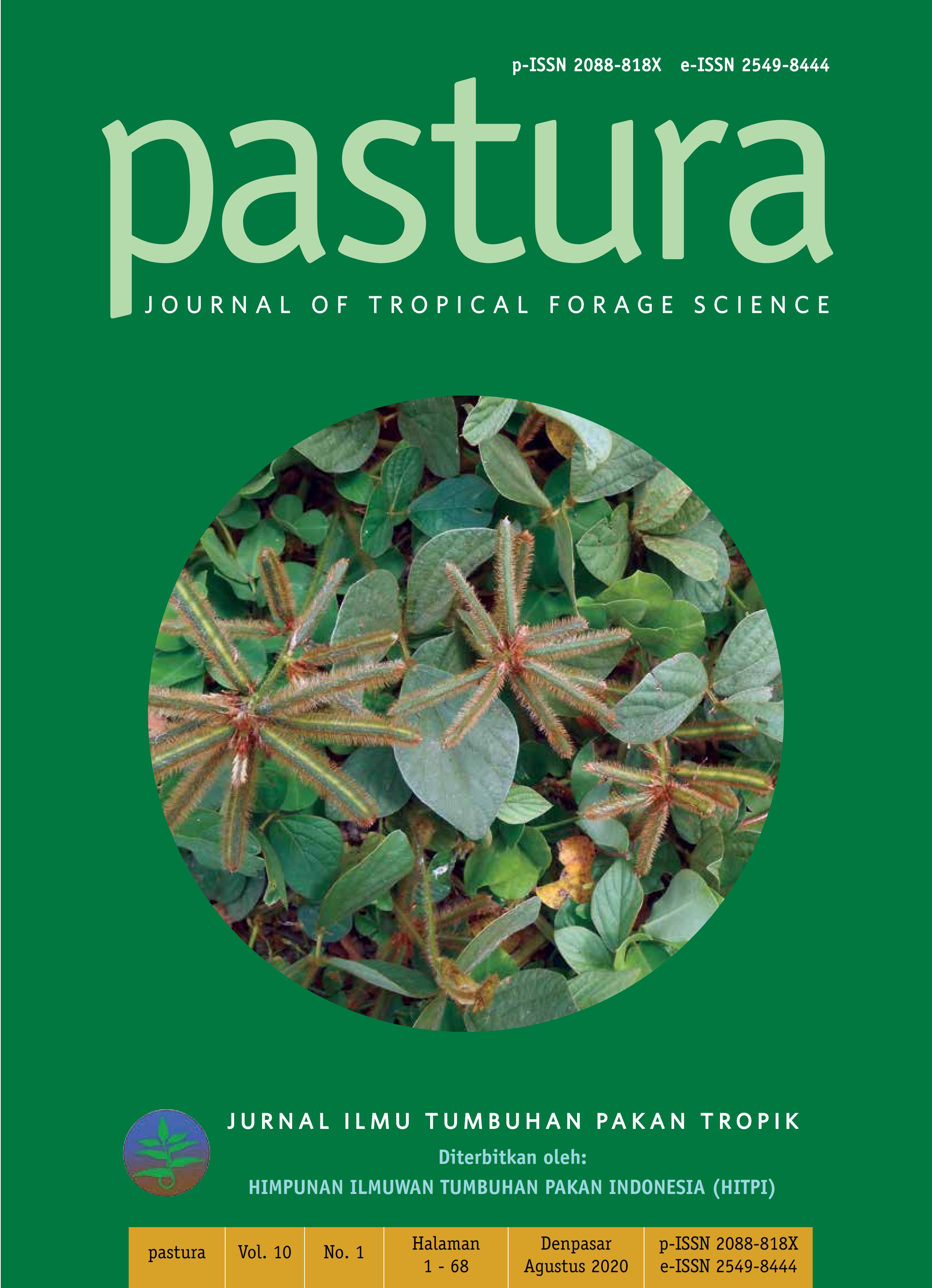RESPON TANAMAN PAKAN ARBILA (Phaseolus lunatus L.) TERHADAP VOLUME AIR YANG BERBEDA PADA MUSIM KEMARAU
Abstract
Penelitian yang bertujuan mengevaluasi respon tanaman arbila (Phaseolus lunatus L.) terhadap volume
air berbeda pada musim kemarau, telah dilaksanakan selama 5 bulan di Lahan Politani Kupang. Materi
penelitian adalah polybag berukuran 20 × 40 cm, benih arbila, media tanam (tanah latosol dan kotoran
kambing), air bersih, pita ukur, gelas ukur kapasitas 100 ml skala terkecil 1 ml, timbangan berkapasitas 5
kg berskala terkecil 1 g, dan oven. Penelitian ini didesain dengan rancangan acak lengkap 4 × 5. Perlakuan
adalah K
100:
mendapat air 100% kapasitas lapang (KL), K
75
:
75% KL, K
50
: 50% KL, K
: 25% KL. Variabel
yang diamati adalah panjang akar (PA) (cm), jumlah bintil akar (JBA) (buah), pertambahan jumlah tunas
(PJT) (tunas/minggu), jumlah daun yang gugur (JDG) (daun), produksi bahan segar hijauan (PBSH) (g/
polybag), dan produksi bahan kering hijauan (PBKH) (g/polybag). Analisis varians menunjukkan bahwa
volume air berpengaruh sangat nyata terhadap PJT, JDG, PBSH dan PBKH, tapi tidak nyata (P>0,05)
terhadap PA dan JBA. Uji Duncan menunjukkan PJT tertinggi pada K
100
(4,35) diikuti K
(1,85),
K
25
25
(0,90). JDG tertinggi pada K25 (16,60) yang berbeda dengan K50 (12,40), K75 (12,00) dan terendah
pada K100 (10,80). PBSH tertinggi pada K
100
(110,80) diikuti K
75
(83,20), K
50
75
(57,00), K
(32,60). PBKH
tertinggi pada perlakuan K
100
(23,86) diikuti K
75
(16,95), K
50
(11,50), dan K
(7,75). Disimpulkan bahwa
pada musim kemarau, tanaman arbila masih mampu bertahan hidup hingga volume air 25% dari KL dan
merespon berkurangnya air dengan meningkatkan jumlah daun yang gugur, menurunkan pertumbuhan
dan produksi hijauan.
25
Kata kunci: arbila (Phaseolus lunatus L.), jumlah tunas, produksi hijauan, respon tanaman, volume air





